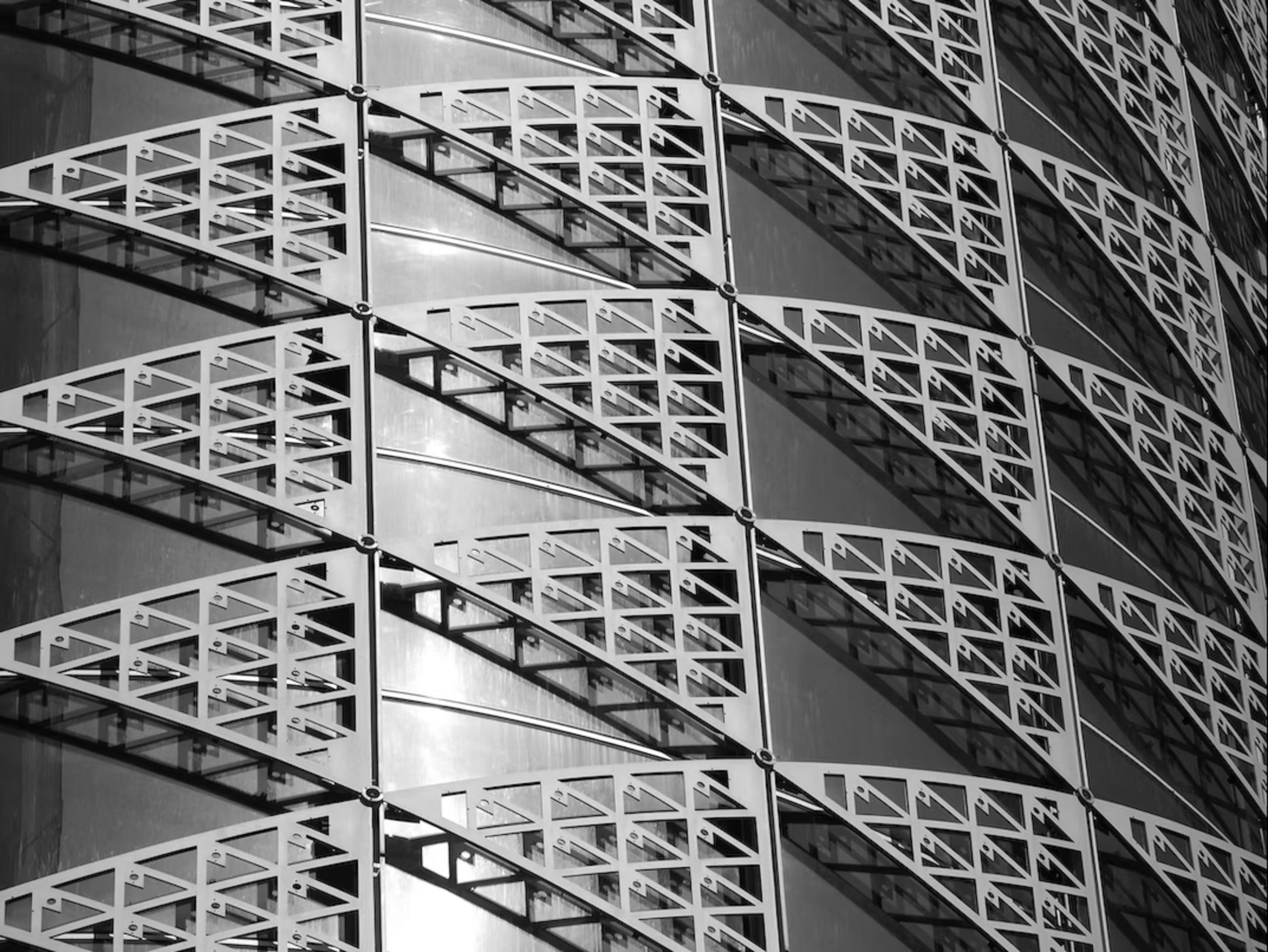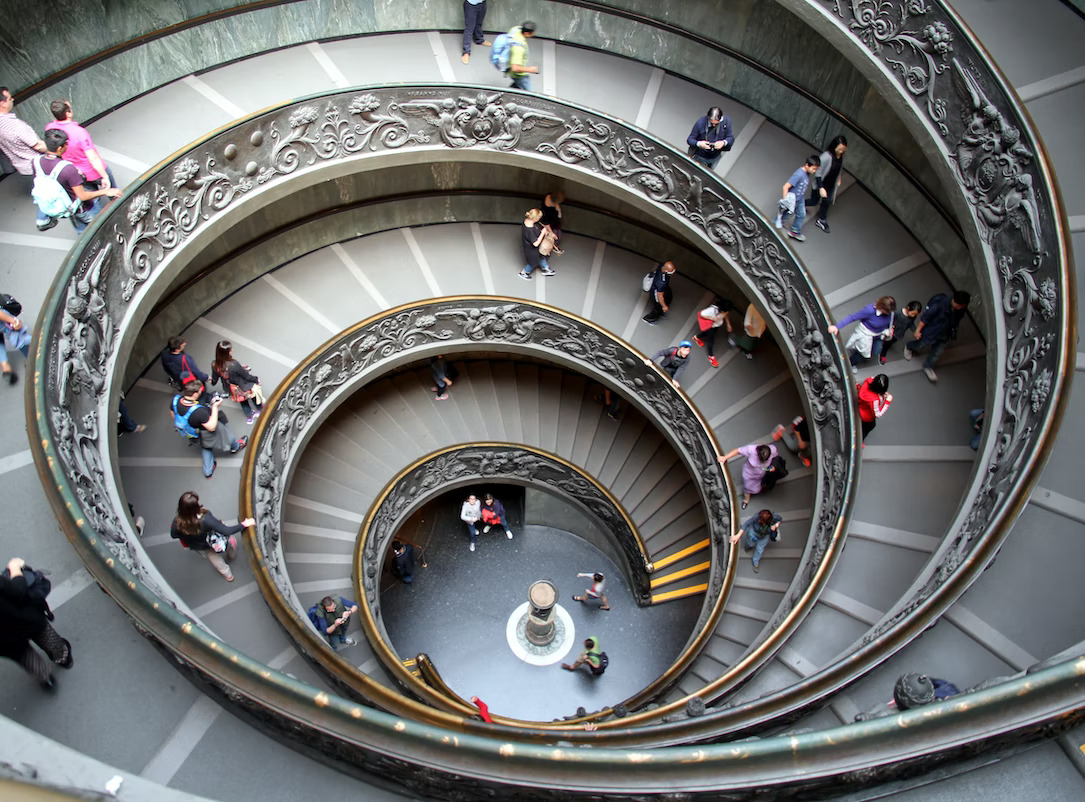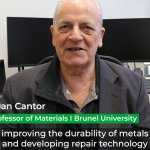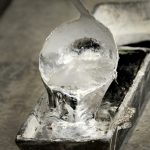WP1: CIRCULAR ALLOYS

Based on CE principles, metallic alloys need to be designed not only to have high performance, but also to facilitate the transition to full metal circulation by slowing down the loop (alloys designed for reuse), narrowing the loop (alloys designed for high performance) and closing the loop (alloys designed for recycling). In CE, alloys should exhibit the following characteristics:
- They offer ultra-high and consistent performance so less material is required for the same application and a reduced safety factor is used in engineering design resulting in reduced usage or dematerialisation.
- They are designed for recycling by using commonly available alloying elements and avoiding the use of recyclability-limiting elements.
- They are easily processed to deliver the highest possible physical and mechanical properties.
- They are tolerant to inclusions and impurity elements, so that their performance is not affected by limited variation in levels of inclusion content and impurity and processing conditions.
- They cover a wide range of engineering applications.
- They have been designed for standardisation and compatibility, and thus have a small number of alloy grades. In this WP, we have set up 3 projects to demonstrate the scientific approaches and technological considerations for developing circular alloys at different circularity.
WP1.1, WP1.2 and WP1.3 are targeting alloys for long term (high circularity), medium term (medium circularity) and short-term (low circularity) applications, respectively.
♦ WP Lead: Prof. Brian Cantor
WP1.1: Development of high-performance multi-principal-element alloys
For thousands of years, metallic alloys have been developed using the same approach: a single principal element is alloyed with a few selected elements to enhance the primary properties. However, this approach may have reached its limits, and we need to go beyond this traditional pathway to materials development before the discovery of society-changing materials. This change of direction is emerging, and recent materials development has demonstrated that metallic materials with multi-principal elements (MPE) offer unique combination of properties and have the potential to close the materials loop. WP1.1 aims to develop the scientific principles and technological approaches towards the development of the ultimate metallic alloys for CE based on the MPE alloy concept. WP1.1 contributes to slowing (last longer), narrowing (use less), and closing (recycling) the resource loop. The specific research activities include:
- an experimental search for the unique compositional space for MPE alloys supported by thermodynamic assessment and machine learning;
- a systematic assessment of thermo-physical properties of MPE alloys;
- understanding the solidification behaviour of MPE alloys;
- understanding the physical and mechanical properties of promising MPE alloys.
◊ WP1.1 will interact with WP3.3 for circular design strategies.
♦ The Team:
Prof. Zhongyun Fan Prof. Brian Cantor Prof. Isaac Chang Prof. Zidong Wang Dr. Chamini Mendis
Dr. Feng Gao Dr. Ewan Lordan Dr. Xiangzhen Zhu Dr. Shihao Wang Dr. Ali Yazdan PhD Syed Fatimi
WP1.2: Rationalisation of alloy grades and specifications for steels and aluminium alloys
One of the adverse consequences of dissipative use of metallic materials is that there are currently thousands of grades of metallic materials in commercial use today. Many of them differ only slightly in composition, processing conditions or origin of production, offering essentially the same performance. Unnecessary alloying elements and excessively tight alloy specifications increase production costs, reduce resource productivities, cause more environmental damage, and make the end-of-life products difficult (if not impossible) to recycle. This is not compatible with CE principles. Recycling can be improved significantly with materials rationalised and products engineered from the start for this purpose. For instance, the current over 400 grades of Al-alloys (IAA) can be reduced to 10-15, and similarly the current 3,500 grades of steels (WSA) can be reduced to 50-100 without compromising engineering applications. WP1.2 will be carried out by 2 PhD students. WP1.2 aims to rationalise alloy grades and specifications of steel and aluminium alloys to facilitate full metal circulation. WP1.2 contributes to slowing the resource loop by design for standardisation and compatibility. The specific research activities include:
- simplification of alloy systems based on their compositions, thermomechanical history, levels of performance and fields of application;
- standardisation of alloy compositions by using commonly available alloying elements and avoiding the recyclability-limiting elements;
- optimisation of thermomechanical treatment procedures for high performance;
- development of new alloy specifications.
◊ WP1.2 will interact with WP3.3 for circular design strategies and WP4.2 for assessing environmental impact.
♦ The Team:
Prof. Zhongyun Fan Prof. Hamid Assadi Prof. Dmitry Eskin Prof. Isaac Chang Dr. Chamini Mendis
PhD Tanu Tiwari PhD Sadegh Jalalian
WP1.3: Development of high-performance grain refiners for Al-alloys
Although grain refinement by addition of TiB2 based grain refiners has been a common industrial practice for over 70 years, the currently most widely used TiB2 based grain refiners suffer from inconsistency in performance. Recently, researchers in BCAST found that it is the formation of a monolayer of (112) Al3Ti 2-dimensional compound (2DC) on the (0001) TiB2 surface that makes TiB2 particles extremely potent for heterogeneous nucleation of aluminium. However, the practical question is how to produce TiB2 particles with (112) Al3Ti 2DC each and every time? WP1.3 aims:
- to develop high performance TiB2 based grain refiner with high consistency;
- to convert the business model from the current product-based to service-based.
WP1.3 contributes to narrowing (use less) the resource loop. The specific research activities include:
- a systematic assessment of the current grain refiner production process to correlate inconsistency of grain refinement with chemical segregation at the liquid/TiB2 interface;
- optimisation of the grain refiner production process to ensure the creation of the appropriate interfacial segregation and interfacial atomic arrangement;
- scale up the optimised grain refiner production process to industrial scale;
- development and implementation of grain refinement as a service;
- evaluation of the overall economic, environmental and social benefits.
◊ WP1.3 will interact with WP3.1 for circular business models and WP4.2 for assessing environmental impact.
♦ The Team:
Prof. Zhongyun Fan Dr. Jayesh Patel Dr. Yun Wang
==========================================================
WP2: CIRCULAR PROCESSING TECHNOLOGIES

Technological innovation enables the transition to CE, and to date this aspect of CE research has not been adequately addressed. In the long term, CircularMetal research will cover the full range of technological approaches to deliver full metal circulation: reduce, reuse, remanufacture, recycle and recover. As a starting point for the CircularMetal programme we will focus our research on the following selected areas matched to the funding available. These selected specific projects are intended to demonstrate how technologies contribute to the transition to CE by slowing, narrowing and closing the resource flow.
♦ WP Lead: Prof. Geoffrey Scamans
WP2.1: Reuse: Rejuvenation of used components for reuse
More than 80% of metallic components at the end of their service have perfect physical dimensions but reduced mechanical performance due to fatigue damage. Such fatigued components can be effectively reused if they can be rejuvenated without affecting the overall microstructure of the component. Recent research suggests that electro-pulsing treatment (EPT) can be used for improving fatigue life. WP2.1 aims to develop a non-destructive technology based on EPT for rejuvenation of fatigued steel and aluminium components for reuse. WP2.1 contributes to slowing the resource loop by extension of component life.
The specific research activities include:
- a comprehensive assessment of fatigue damage of selected representative automotive components;
- understanding the interaction between electro-pulsing and fatigue defects using fatigue test samples;
- development of an effective strategy for rejuvenation of used metallic components;
- development of an electro-pulsing facility and process for rejuvenation of engineering components.
◊ WP2.1 will interact with WP3.1 for circular business models and WP3.3 for circular design strategies.
♦ The Team:
Prof. Zhongyun Fan Prof. Brian Cantor Prof. Isaac Chang Prof. Shouxun Ji Dr. Chamini Mendis
Dr. Ebad Bagherpour Samira Mortezaei PhD Maryam Izadi
WP2.2: Remanufacture: Cold forming of YGV components for reuse
Steel is an extensively recycled material, with 40% of worldwide crude steel production being from steel scrap. The challenges are to increase the quantity and quality of steel scrap suitable for recycling and the amount of steel reuse and remanufacture before it enters the scrap supply chain. WP2.2 aims to support the emergence of a reuse and remanufacture approach for high strength structural steel focussed on the yellow-goods vehicle (YGV) and heavy-duty vehicle (HDV) sectors. WP2.2 contributes to slowing the resource loop by extension of component life.
The specific objectives include:
- to assess the production Bill of Materials for the proportions that could be recovered during disassembly from a YGV and HDV EoL product for: potential reuse or remanufacture as components for YGV / HDV; reuse or remanufacture into other components; recycling as high-quality scrap; recycling as low-quality scrap;
- to develop a framework for assessing the mechanical state of recovered components using currently available sensor technologies, including experimental case studies;
- to assess the rejuvenation and reforming methods required for components segregated for remanufacture, including experimental case studies;
- to re-assess the proportion of recovered components that may be re-used, re-manufactured and recycled after structural integrity and rejuvenation, including opportunities for redesign to increase use of recovered components;
- to define the input technical parameters to feed into economic and supply chain case studies for steel reuse and remanufacture in the YGV / HDV sectors.
◊ WP2.2 will interact with WP3 for circular business management and WP4.2 for assessing environmental impact.
♦ The Team:
Prof. Claire Davis Dr. Russell Hall Dr. Sumit Hazra
WP2.3: Recycle: Development of advanced sorting technology for steel scrap
The UK consumes 15Mt p.a. of steel in final goods with two thirds of this being imported. In contrast, the UK generates more than 10Mt steel scrap p.a., of which 8Mt is exported with little value added. Converting all the UK generated steel scrap into high quality steel products to meet the UK’s steel requirements will bring significant economic and environmental benefits to the UK plc. The bottleneck is the inadequate scrap separating technologies developed over 40 years ago. Consequently, the processed steel scrap is severely contaminated with inclusions and impurity elements (Cu, Sn, Zn, Pb, Sb, Co) and is difficult to recycle economically. WP2.3 aims to develop innovative technologies for the automated delivery of scrap separation through an advanced sensor-based approach and a statistical machine learning system for real-time computer vision for leveraging video-captured data streams. WP2.3 contributes to closing (recycling) the resource loop.
The specific research activities include:
- prototyping advanced sensor-based scrap identification and separating technologies;
- development of a computer vision-based system for automated scrap identification from real-time video data;
- developing the algorithm using ‘deep artificial neural networks’ for automated image processing and recognition;
- developing a combined prototype system leveraging both the sensor- and image-based systems for scrap identification and separating.
◊ WP2.3 will interact with WP4.2 for assessing environmental impact.
♦ The Team:
Prof. Giovanni Montana Dr. Zushu Li PhD Yijun Quan
WP2.4: Recycle: Increasing scrap contents in Al extrusion and Al sheet for EV (electrical vehicle) applications
Recently, the LiME Hub (www.LiME.ac.uk) has developed a novel MC-DC casting process, which can produce Al-alloy billets/slabs with fine grain size, uniform microstructure, uniform chemistry and significantly reduced cast defects. It has been demonstrated at lab scale that the MC-DC casting technology not only enables increased scrap contents but also decreases materials and processing cost without compromising engineering performance. This project aims to increase the scrap contents in both Al extrusions and Al sheet for EV applications through the MC-DC casting technology. We have developed two parallel projects with our industrial partners: Al extrusion with Constellium, and Al sheet with Chinalco. WP2.4 contributes to narrowing (use less) and closing (recycling) the resource loop.
The specific research activities include:
- scale up the MC-DC casting process for producing high quality Al billets/slabs with high scrap content;
- optimisation of the downstream thermomechanical processing for high quality feedstock;
- development of an integrated component manufacturing system to enhance performance and to maximise component weight reduction;
- conducting life cycle analysis (LCA) to evaluate systematically the economic, environmental and social benefits to the relevant stakeholders.
◊ WP2.4 will interact with WP4.2 for assessing environmental impact.
♦ The Team:
Prof. Zhongyun Fan Prof. Geoffrey Scamans Dr. Jayesh Patel
WP2.5: Recovery: Recovering A20X alloy scrap for aerospace applications
A20X alloys, the world’s strongest cast aluminium alloys, are Al-Cu based alloys containing sub-micron sized TiB2 particles. They were developed, patented and marketed by Aeromet International plc for aerospace applications. Due to their high TiB2 content, A20X alloys are energy-intensive to produce and difficult to cast into engineering components, resulting in a significant proportion of process scrap. Such scrap contains excessive inclusions and large TiB2 agglomerates, rendering them impossible to recycle. Recently, our feasibility study showed that such scrap A20X alloys can be recovered back to the primary grade by using an intensive melt shearing process. WP2.5 aims to develop a melt processing technique to recover effectively and economically the A20X alloy scrap to primary alloy grade at the industrial scale. WP2.5 contributes to narrowing (use less) and closing (recycling) the resource loop.
The specific research activities include:
- a comprehensive assessment of the A20X alloy scrap in terms of chemical composition, chemical and physical nature of oxide inclusions and TiB2 particles; and their variation from different scrap sources;
- development and scale up of the intensive melt shearing process for recovery of A20X alloy scrap;
- implementation of the new process in an industrial environment;
- evaluation of the economic, environmental and social benefit to both Aeromet and to the UK plc as a whole.
◊ WP2.5 will interact with WP4.2 for assessing environmental impact.
♦ The Team:
Prof. Zhongyun Fan Dr. Jayesh Patel
==========================================================
WP3: CIRCULAR BUSINESS

CE is an economic system in which products and materials are kept at their maximum value and functionality. Full metal circulation needs durable products that can be repaired, reused, remanufactured, and recycled, rendering product design a key enabler to CE. Full metal circulation also needs new business models with supporting supply chain design, to translate circular strategies into competitive advantages, company resilience and successful revenue models. During transition to CE, business opportunities may arise from measures that either slow, or narrow or close the loop of resource flow. Such opportunities can be analysed from three interconnected aspects of business management: business model innovation, product design principles and supply chain management. Each of these three is affected by the economic, environmental, social considerations and a long-term orientation (future generations). For this reason, the specific research activities in WP3 are organised in an integrated manner, leading to a range of novel (business model, supply chain and product) design principles and tools, and their application in three joint industrial cases studies.
♦ WP Lead: Prof. Janet Godsell
♦ The Team:
Prof. Janet Godsell Prof. David Harrison Dr. Fabrizio Ceschin Dr. Alessio Franconi
PhD Orsolya-Anna Mate PhD Tamba Konteh
WP3.1: Circular business model innovation
Circular business models (CBMs) enable economically viable ways to decouple value creation from material and energy consumption. By closing, narrowing, and slowing the resource flow, the resource input into and the waste and emission leakage out of the original system are minimised, and the sustainability performance improved. Although knowledge and know-how on CBMs have been expanding over the past years, there have been only limited studies on the role of circular business models in the metals industry, and thus there is a lack of understanding of how the full spectrum of CBMs can be successfully applied to the metals industry.
WP3.1 plans to answer the following 3 questions:
- What CBMs are required to enable full metal circulation?
- What are the required socio-technical changes to successfully implement these CBMs?
- How can businesses be enabled in designing and developing CBMs?
The specific research activities include:
- develop scenarios of how CBMs can enable full metal circulation by 2050;
- develop roadmaps to transition from the current state to future full metal circulation;
- develop CBM archetypes;
- develop, test and refine novel CBM design principles and tools for the metal industry;
- apply CBM design principles and tools in 3 industrial case studies.
WP3.2: Circular supply chain design
Over the last couple of decades, it has become clear that product, process and supply chain need to be considered concurrently (i.e., 3D Concurrent Engineering – 3DCE). The concept of 3DCE has historically been considered in relation to the ‘linear’ economy and the manufacture of products. As we enter the next stage of our industrial evolution, new technologies are enabling a shift to new servitized business models which support the principles of CE. In alignment with the business model archetypes developed in WP3.1, and in support of the product design principles developed in WP3.3, WP3.2 seeks to identify the Circular Supply Chain (CSC) design principles and supporting operational processes required for the adoption of CBMs for metals. The key research questions are:
- What are the CSC design principles and supporting operational processes that support the successful adoption of CBMs for metals?
- What are the barriers, drivers and enablers to adoption?
- How can the adoption of the principles of 3DCE accelerate the successful adoption of CBMs?
The specific research activities include:
- develop novel CSC design principles with supporting operational processes and drivers to support CBM archetypes for metals;
- apply, test and refine CSC design principles through application in 3 case studies;
- evaluate the impact that adopting a 3DCE approach could have on accelerating the successful adoption of CBMs;
- develop CSC design principles and case studies into a management guide.
WP3.3: Circular product design principles (CPDPs)
Product design plays a crucial role in the transition to CE. It is essential to ensure that products are made to be circular in nature from the onset. The currently available circular design principles are very limited in the metals industry. WP3.3 aims to produce circular design principles to enable business and practitioners to conceive and develop circular metal products. These design principles will be integrated into a range of design tools and methods. WP3.3 will contribute to slowing, narrowing, and closing the resource loops, through considering, for example, design for durability and long life, design for repair and maintenance, and design for disassembly, reuse and recycling.
The key research questions are:
- What CPDPs can most effectively enable full metal circulation?
- What is the best approach to implement these CPDPs in the metals industry?
The specific research activities include:
- specifying and detailing CPDPs pertinent to metals;
- adapt and update CPDPs in the light of technological innovation and advances from other WPs;
- develop, test and refine novel CPDPs and tools for the metal industry;
- apply CPDPs and tools in 3 industrial case studies.
==========================================================
WP4: CIRCULAR ECONOMICS AND CIRCULAR SOCIETY

Metals have a strong macro-economic relevance as they underpin all major manufacturing and high-tech activities. Full metal circulation will have strong economy-wide repercussions, and achieving benefits for both economies and the environment will demand an active industrial policy and proper assessments. The CircularMetal programme is driven by the hypothesis of potential benefits stemming from less dependence and lower costs for importing raw materials and intermediate goods, a higher share of value-added activities in the UK, and a “growth from within” fuelled by secondary metals through reuse, remanufacture, recycle and recovery. We will update and run the UCL macro-economic CGE model ENGAGE with extensions into metals to assess socio-economic impacts for the UK and internationally; we will develop insights on future policies and pricing for scenarios and roadmaps (joint task with WP3); and we will develop CE principles that reflect insights from macro-economics, new institutional and evolutionary economics, political economy, and consumer research.
♦ WP Lead: Dr. Alvaro Calzadilla
WP4.1: Market, pricing, and circular policy
The distortions in the markets for metals can be seen as a ‘web of constraints’ posing various barriers to full metal circulation. Such barriers stem from negative environmental externalities (energy-related CO2 emissions, air pollutants, water contaminants, waste) that are not priced properly and from an undervaluation of ecosystem services related to land where the assets are located. Consequently, there is a structural bias favouring primary extraction and production and hindering the transition to full metal circulation. WP4.1 aims to develop principles and policy pillars to facilitate the transition to full metal circulation, which will feed into scenarios, roadmaps and modelling work (WP4.2) as well as into long-term UK policy objectives of net zero carbon budgets, the Environment Bill and the Industrial Strategy.
The specific objectives include:
- a systematic understanding of pricing failures and their impacts on the net present value of metals, based on available data and assessments – insights about impacts on markets will be co-created with stakeholders, also considering the International Financial Reporting Standard (IFRS) and the International Accounting Standard (IAS & IAS 2);
- develop principles and conduct scenarios and roadmaps supported by rigorous economic analysis (WP4.2) on drivers for distortions over time and across scales;
- co-create policy pillars, considering Extended Producer Responsibility (EPR), material stewardship and enabling of new business models.
Economic incentives will be designed at different levels (extractive economies, UK, international) to boost the markets for full metal circulation.
♦ The Team:
Dr. Alvaro Calzadilla Dr. Matthew Winning Dr. Teresa Domenech Aparisi
WP4.2: Modelling of economic implications of full metal circulation
A deep assessment of the consequences of full metal circulation requires a clear understanding of the physical and economic flows through the whole supply chain in national and international markets. WP4.2 aims to assess the economic benefits and trade-offs of different CE policies in the UK and internationally, considering economy-wide interlinkages and feedback effects, alternative production processes, adaptation in upstream and downstream industries and highlighting the role of international commodity trade.
The specific research activities include:
- undertake a detailed data analysis of the role and importance of steel and aluminium in the main producer and consumer countries, focusing on national and international supply chains;
- develop a state-of-the-art global economic model for the ex-ante economic assessment of transition scenarios towards CE in the steel and aluminium industries;
- assess CE policies to overcome barriers and improve incentives for CE in the UK, Europe, and at the global level, based on insights from circular policy and pricing (WP4.1), technology (WP2) and business (WP3);
- evaluate the direct, indirect and induced impacts of CE policies in the UK and understand how these impacts propagate to other countries, and vice versa;
- inform the design of policy strategies and roadmaps assessing complementarities and trade-offs of different circular policies on production, consumption and trade.
♦ The Team:
Dr. Alvaro Calzadilla Dr. Matthew Winning Dr. Teresa Domenech Aparisi
WP4.3. Circular society and outreach
Contemporary UK society struggles to use materials efficiently and sustainably, and in particular, since the mid-20th century we have seen a dramatic decline in the repair and recycling of household objects. Research is urgently needed to identify barriers (technical, economic, geographic and emotional) to recycling (collection and sorting) and repair on a wider and more coordinated scale. We will conduct detailed analysis of behaviours at each of the 6 stages of consumption (acquisition, appropriation, appreciation, devaluation, divestment and disposal). We will become public champions for circular metals through maintaining a strong media and online presence, as well as having an educational and policy outlook. We will inform public debate and supply new data and insights into public discourse on the vital role of metals in society. Our legacy will not just be systems change, but a fundamental change of public attitudes to tackling waste and the resulting environmental pollution. This will be achieved through the creation of BBC programmes, media articles, research papers, public events, citizen science, teaching resources and policy interventions.
♦ The Team:
Prof. Mark Miodownik Dr. Charnett Chau Dr. Danielle Purkiss


